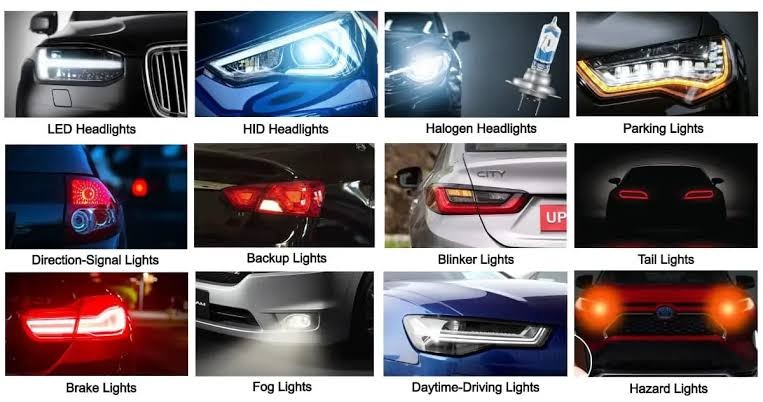Enhance road safety with proper use of vehicle lights. Learn guidelines for full beam, dip lights, hazard blinkers, fog lights, turning indicators, parking lights, and horns. Drive responsibly and confidently!
Driving safely requires a comprehensive understanding of the different types of lights in your vehicle and their appropriate usage. Learn the proper techniques for using full beam lights, dip lights, hazard blinkers, fog lights, turning indicators, parking lights, and horns to ensure optimal safety on the road.
Full/High Beam Lights:
- Enhancing Visibility: Understand when and where to use full beam lights to improve visibility without causing discomfort to other road users.
- Urban Areas: Avoid using full beam lights in built-up areas with sufficient street lighting to prevent glare and distraction.
Low Beam/Dip Lights:
- Urban Settings: Utilize dip lights when driving through areas with good street lighting to maintain clear visibility without dazzling others.
- Following Distance: Switch to dip lights when following closely behind another vehicle, allowing their rear red lights to remain clearly visible.
Hazard Blinkers:
- Communicating Hazards: Activate hazard blinkers to warn other drivers of potential hazards on the road.
- Temporary Obstructions: Use hazard blinkers when your vehicle is stationary and causing a temporary obstruction, such as during roadside repairs.
- Dangerous Breakdowns: Employ hazard blinkers during a breakdown in a hazardous location, ensuring other drivers are aware of the obstruction.
- Low Visibility: Activate hazard blinkers in inclement weather conditions with reduced visibility to increase your vehicle's visibility to others.
- In-Motion Issues: Use hazard blinkers if any unexpected issues arise while driving, signaling that you require assistance or are experiencing difficulties.
- Proper Usage: Avoid using hazard blinkers for arbitrary stops or relying solely on them for your safety.
Fog Lights:
- Optimal Visibility: Activate fog lights specifically when driving in foggy conditions, allowing better visibility close to the ground.
- Visibility Criteria: Refrain from using fog lights when visibility is not significantly impaired to prevent unnecessary glare.
Turning Indicators:
- Accurate Signaling: Use turning indicators solely for indicating your intention to turn left or right, providing clear communication to other drivers.
- Straight Movements: Avoid using turning indicators or hazard blinkers to indicate straight movements, preventing confusion among fellow road users.
Parking Lights:
- Enhanced Visibility: Ensure your parked vehicle is easily visible to other drivers, reducing the risk of accidental collisions.
- Proper Usage: Reserve hazard blinkers for situations that require signaling a hazard, avoiding unnecessary activation when parking by the roadside.
Effective Use of Horn:
- Alerting Potential Collisions: Utilize the horn to warn other drivers of potential collisions, such as when someone might turn in front of your vehicle.
- Pedestrian and Animal Safety: Use the horn to alert pedestrians and animals, helping prevent accidents.
- Challenging Road Conditions: Sound the horn on narrow mountain roads or blind curves where visibility is limited, ensuring others are aware of your presence.
- Avoiding Frustration: Refrain from using the horn out of frustration or as an expression of impatience.
- Respect for Others: Be considerate when honking at pedestrians, bicyclists, or motorcyclists, using the horn only if it helps avoid a collision.
- Sound Perception: Remember that the horn sounds significantly louder outside your vehicle, emphasizing the need for responsible usage.
By adhering to these comprehensive guidelines, you can confidently and safely navigate the roads, promoting a harmonious driving environment for all road users.

Comments (0)
Please login to join the discussion
Be the first to comment on this article!
Share your thoughts and start the discussion